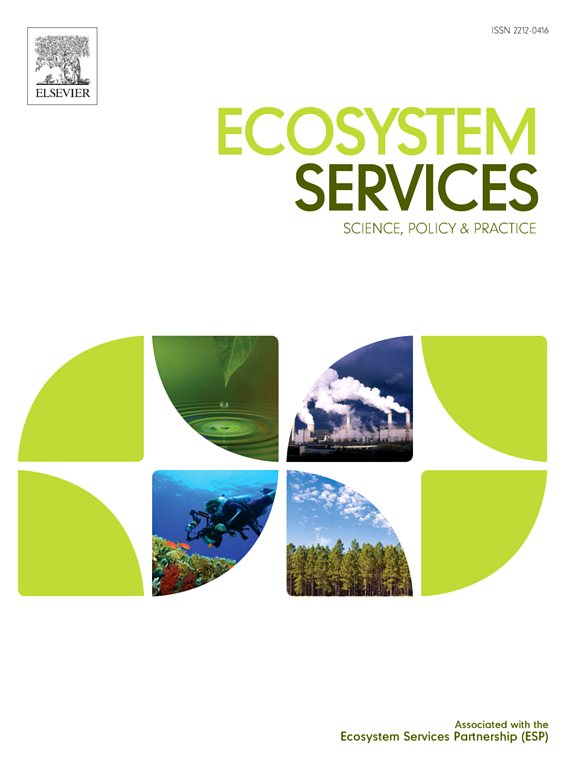Evaluation of main regulating, provisioning, and supporting ecosystem services of urban street trees: A literature review
IF 6.6
2区 环境科学与生态学
Q1 ECOLOGY
引用次数: 0
Abstract
In urban ecosystems, the value of green spaces and biodiversity is increasingly recognized, and street trees provide beneficial effects or ecosystem services. However, street trees are not all the same, and some species are better suited for specific urban contexts and provide more benefits than others. Considering an extensive literature, here we provide a framework to evaluate the various ecosystem services that street tree species can provide in urban environments related to regulating, provisioning, and supporting services. For each ecosystem service, we selected the numerous morphological, physiological, and ecological features of the tree species that can affect the provision and extent of the benefits. An ideal species does not exist because some traits can be beneficial in certain climates or for specific functions and be negative for others. Here, we suggest an array of traits that urban planners can look for if they want to maximize a specific ecosystem service rather than another. For instance, evergreen, tall, fast-growing species are potentially the best types of trees if urban planners want to maximize carbon sequestration amounts, but the same traits could be negative for other ecosystem services. All in all, we recognize that maintaining a diversity of tree species, with an array of morphological, physiological, and ecological features, can diversify and possibly increase the provision of ecosystem services.
城市行道树的主要调节、供给和支持生态系统功能评价:文献综述
在城市生态系统中,绿色空间和生物多样性的价值日益得到认可,行道树提供了有益的生态系统服务。然而,行道树并不都是一样的,有些物种更适合特定的城市环境,比其他物种提供更多的好处。考虑到广泛的文献,本文提供了一个框架来评估街道树种在城市环境中可以提供的各种生态系统服务,包括调节、供应和支持服务。对于每一种生态系统服务,我们选择了多种形态、生理和生态特征,这些特征可以影响效益的提供和程度。理想的物种并不存在,因为某些特征在某些气候或特定功能下是有益的,而对其他特征则是不利的。在这里,我们提出了一系列城市规划者可以寻找的特征,如果他们想要最大化一个特定的生态系统服务,而不是另一个。例如,如果城市规划者想要最大限度地增加碳固存量,那么常绿、高大、快速生长的物种可能是最好的树木类型,但同样的特征可能对其他生态系统服务不利。总而言之,我们认识到,保持具有一系列形态、生理和生态特征的树种的多样性,可以使生态系统服务多样化,并可能增加其提供的服务。
本文章由计算机程序翻译,如有差异,请以英文原文为准。
求助全文
约1分钟内获得全文
求助全文
来源期刊

Ecosystem Services
ECOLOGYENVIRONMENTAL SCIENCES&-ENVIRONMENTAL SCIENCES
CiteScore
14.90
自引率
7.90%
发文量
109
期刊介绍:
Ecosystem Services is an international, interdisciplinary journal that is associated with the Ecosystem Services Partnership (ESP). The journal is dedicated to exploring the science, policy, and practice related to ecosystem services, which are the various ways in which ecosystems contribute to human well-being, both directly and indirectly.
Ecosystem Services contributes to the broader goal of ensuring that the benefits of ecosystems are recognized, valued, and sustainably managed for the well-being of current and future generations. The journal serves as a platform for scholars, practitioners, policymakers, and other stakeholders to share their findings and insights, fostering collaboration and innovation in the field of ecosystem services.
 求助内容:
求助内容: 应助结果提醒方式:
应助结果提醒方式:


